Free Grade 4 Geometry Worksheets
Posted by Olympiad Tester on
Q1) ABCD is a rectangle not drawn to scale. CE and DE are straight lines. ∠ADE is 38° and ∠BCE is 51°. Find the sum of ∠EDC and ∠ECD.
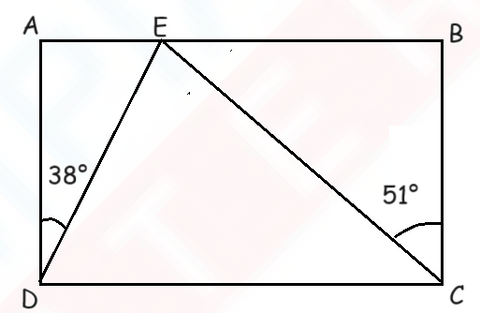
- 42°
- 48°
- 89°
- 91°
Answer
D.
Q2) The figure below is made up of a rectangle and two squares. How many right angles are there altogether?

- 14
- 12
- 8
- 4
Answer
B.
Q3) Which one of the following is the best estimate for ∠ x?
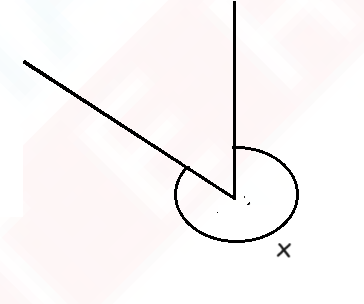
- 1 right angle.
- 2 right angles.
- more than 3 right angles.
- less than 1 right angle.
Answer
C.
Q4) Jamie had a piece of wire 28 cm long. She bent the wire to make the shape which was in the form of 2 squares X and Y as shown below.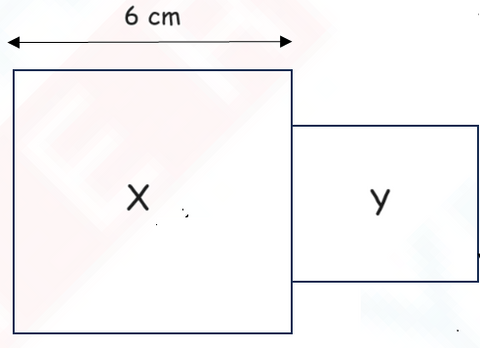
What was the area of Y?
- 1 cm2
- 8 cm2
- 16 cm2
- 4 cm2
Answer
D.
Q5) Given that all the lines meet at right angles, what is the perimeter of the figure shown below?
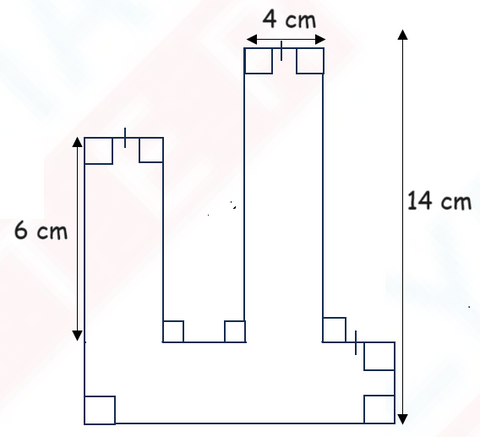
- 35 cm
- 50 cm
- 62 cm
- 72 cm
D
Q6) The figure below, not drawn to scale, is made up of Square X and Rectangle Y. The length of Square X is twice the breadth of Rectangle Y. Find the perimeter of the figure.
Ans: _____________ m
Answer
60
Q7) The figure below, which is not drawn to scale, is made up of Rectangle A, Rectangle B and Square C. Rectangle A and Rectangle B are identical. The length of Rectangle B is twice the length of Square C. The area of Square is half the area of Rectangle B. Find the area of the figure.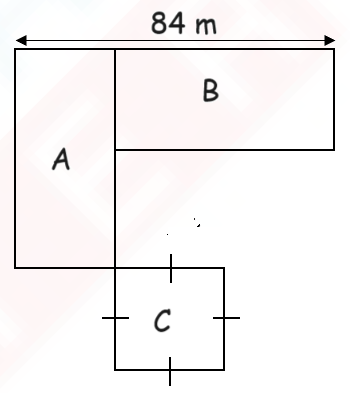
Ans: _________________
Answer
3920 cm square
Q8) Which of the following figures contains both parallel lines and perpendicular lines?

E.
Q9)The figure below is formed by overlapping 3 identical squares of sides 10 cm. Find the area of the figure.
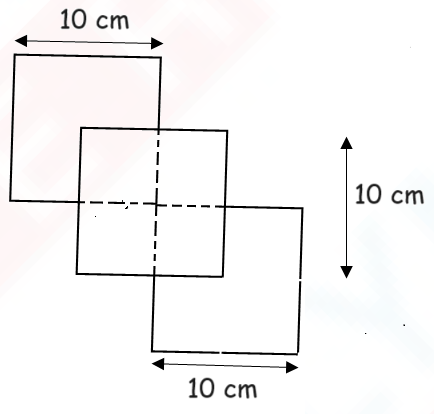
Answer
The area of the figure is 250 cm2.
Q10) A rectangular piece of paper, measuring 9 m by 6 m, is cut into 3 smaller identical pieces as shown in figure A. They are then used to form a shape as shown in diagram B. What is the perimeter of the shape in diagram B?
Answer: ___________________m
Answer
36 m
Q11) The figure below is made up of 2 identical rectangles of length 14 cm. Find the perimeter of the figure.

Ans: _________________ cm
Answer
56
Q12) The diagram below is made up of a shaded square and a rectangle. The square has sides of 4 cm and the area of the rectangle is 3 times the area of the square. What is the breadth of the rectangle if its length is twice the side of the square?

Ans: _________________ cm
Answer
6
Q13) A rectangular piece of paper is folded along line AB.
(a) Find the area of the paper before it was folded.
(b) How many 2-cm squares can be cut from the unfolded rectangular piece of paper?
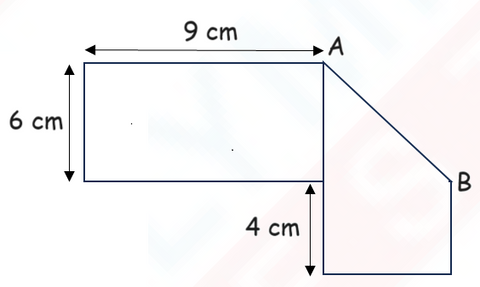
Ans: (a) ________________ (b) ________________
Answer
(a)114 (b) 27
Q14) One of the lines in the figure below is parallel to Line BC. Which line is parallel to BC?
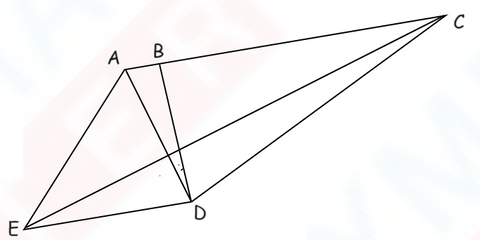
Ans: ________________
Answer
ED
Q15) The figure below is formed by overlapping 5 big squares. The area of each big square is 9 cm2. Each big square is further divided into 4 identical small squares.
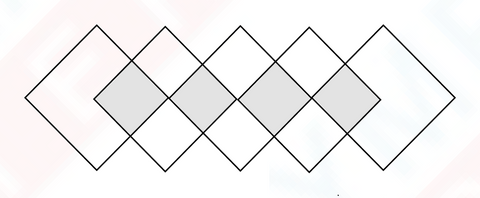
What is the area of the figure?
Ans: _____________________ cm2
Answer
36
Q16) The figure below shows a rectangle PQRS with a square removed. The length of PS is 16 the perimeter of rectangle PQRS. The difference between the length PQ and the length PS is 6cm.

(a) Find the perimeter of the shaded portion.
(b) If the area of the shaded portion is 56 cm2. Find the length of the square.
Ans: (a) _______________
Ans: (b) _______________
Answer
(a) The perimeter of the shaded portion is 36 cm.
(b) The length of the square is 4 cm.
Q17) The figure is made up of 5 identical squares. The total area of the figure is 245 m2. Find the perimeter of the figure.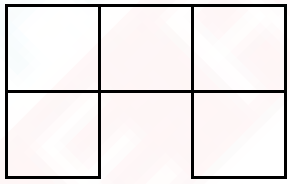
Ans: ______________ m
Answer
84
Q18) 2 rectangles A and B overlap at X as shown in the diagram below.
X is 1/8 of rectangle A.
X is 1/6 of rectangle B.
If the length of rectangle B is 9 cm and its breadth is 4cm, what is the area of the unshaded part of figures A and B?
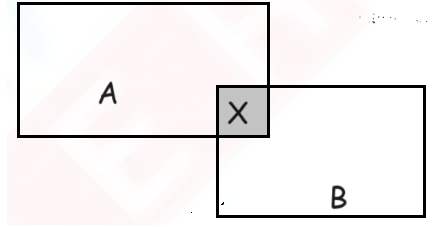
Ans: ______________
Answer
The area of the unshaded part of figures A and B is 72 cm2.
Q19) Write down all the letters that contain only one pair of parallel lines.
Ans: _____________
Answer
M and H
Q20) The figure ABCD is made up of a rectangle and two identical squares.
The perimeter of each square is 16 cm. Find the perimeter of the figure ABCD.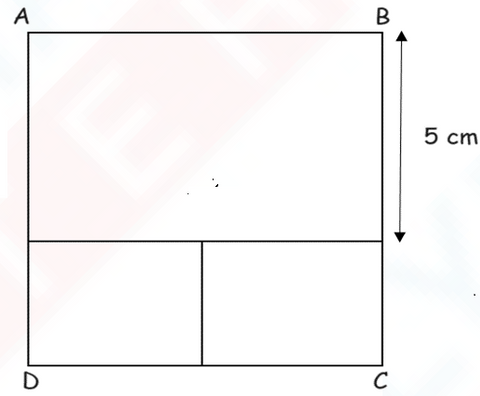
Ans: (a) __________
(b) __________
Answer
a. 34 cm
b. 72 cm2
